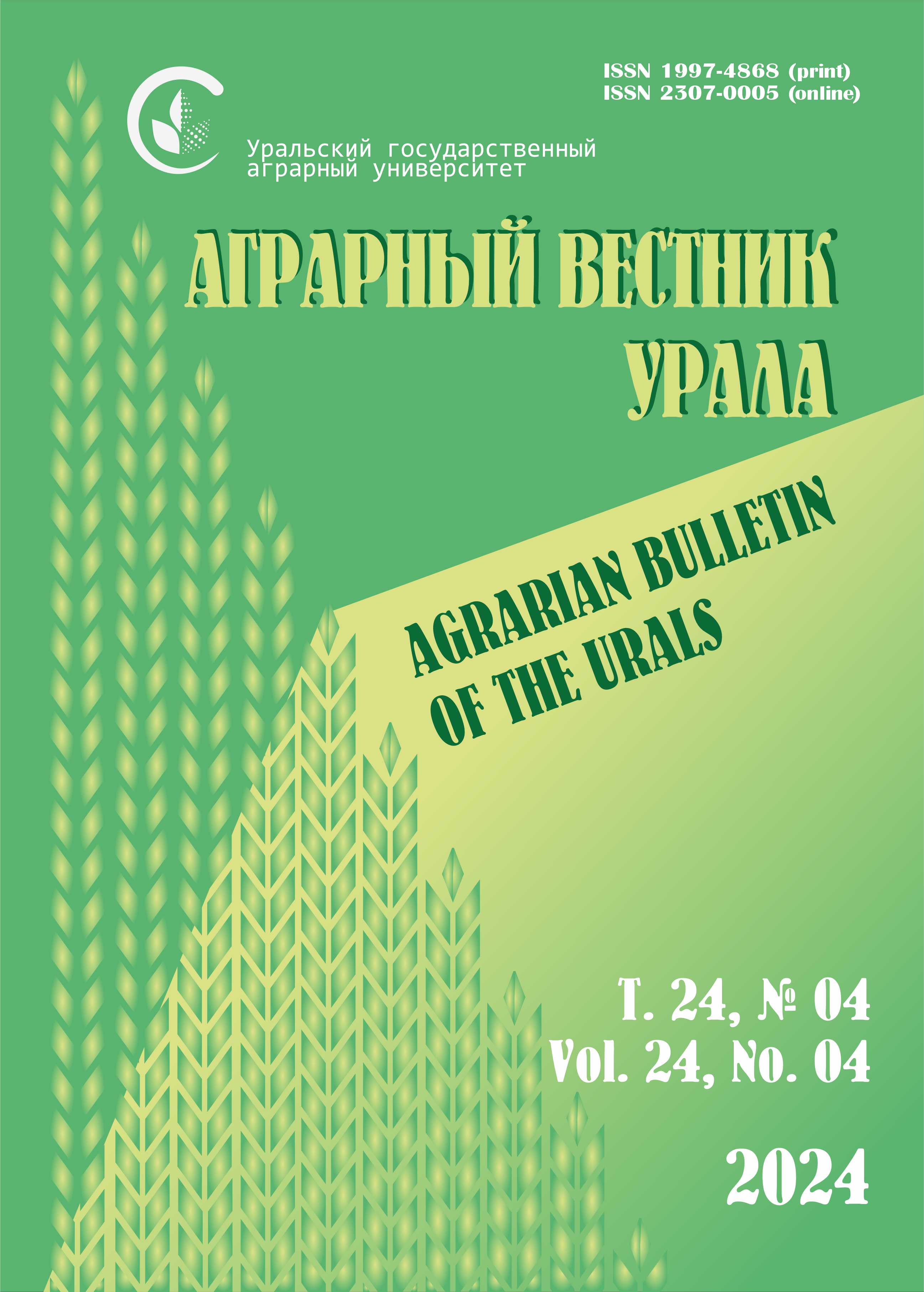Authors:
I. R. Manukyan, E. S. Miroshnikova, T. S. Abieva
North Caucasian Research Institute of Mountain and Piedmont Agriculture – the Affiliate of the Vladikavkaz Scientific Center of the Russian Academy of Sciences, Mikhailovskoye, Russia
E-mail: This email address is being protected from spambots. You need JavaScript enabled to view it.
Abstract. The purpose of the work is to evaluate the source material of winter triticale for economically valuable traits for breeding varieties of grain and forage directions. Methods. The objects of study were winter triticale varieties of various ecological and geographical origin: Hortenso, Moderato (Poland), Prader (Switzerland), TGI 22/1, GR-16/2 (Russia), KS 88 T 142 (USA). Variety Valentin 90 was taken as a standard. Phenological observations and counts were carried out according to the method of state variety testing. The variability of winter triticale varieties was evaluated in the experiment with mowing shoots in the stalking phase at a height of 5 cm, at the test sites in triplicate. When evaluating the genotype-environment interaction, the Plant Productivity Index (PPI) was used. To assess the adaptability of genotypes to cultivation conditions, statistical methods were used to assess the plasticity and stability of varieties. Results. It was established that yields above 1 t/ha on average for three years were shown by variety varieties: Moderato (1.05 t/ha), GR 16/2 (1.14 t/ha) and Hortenso (1.19 t/ha). According to the values of the PPI, the variety specimens are highly productive: Valentin 90 (13.2), Hortenso (12.7), GR 16/2 (13.5), Moderato (11.6). In terms of ecological plasticity, the variety samples were divided into groups: the bi value is close to one – vari- eties well adapted to the conditions of the region (Prader, Hortenso, GR 16/2), extensive varieties – bi less than one (KS 88 T 142), intensive varieties – bi more units (Valentin 90, TGI 22/1, Moderato). According to the indicators of homeostaticity and breeding value, the variety samples were distributed in the following order, with decreasing values: Hortenso, GR-16/2, Valentin 90, Prader, TGI 22/1, Moderato, KS 88 T 142. Additional data were obtained by the method of provocative beveled plots, to determine potential productivity and regrowth. The best regenerative ability was shown by the variety samples: Hortenso, GR 16/2, Moderato, Prader. The scientific novelty lies in the fact that, for the conditions of the foothill zone of the Central Caucasus, promising winter triticale varieties were identified that can be used in breeding varieties of grain and feed direction: Hortenso, GR 16/2, Moderato, Prader.
Keywords: winter triticale, regrowth, adaptability, plant productivity index, environmental plasticity, stress resistance.
For citation: Manukyan I. R., Miroshnikova E. S., Abieva T. S. Otsenka iskhodnogo materiala ozimoy tritikale v selektsii sortov zernokormovogo napravleniya dlya predgornoy zony Tsentralʼnogo Kavkaza [Evaluation of the source material of winter triticale in breeding varieties of grain feed direction for the foothill zone of the Central Caucasus] // Agrarian Bulletin of the Urals. 2020. No. 11 (202). Pp. 21–27. DOI: 10.32417/1997-4868-2020-202-11-21-27. (In Russian.)
Download the full text of the article











